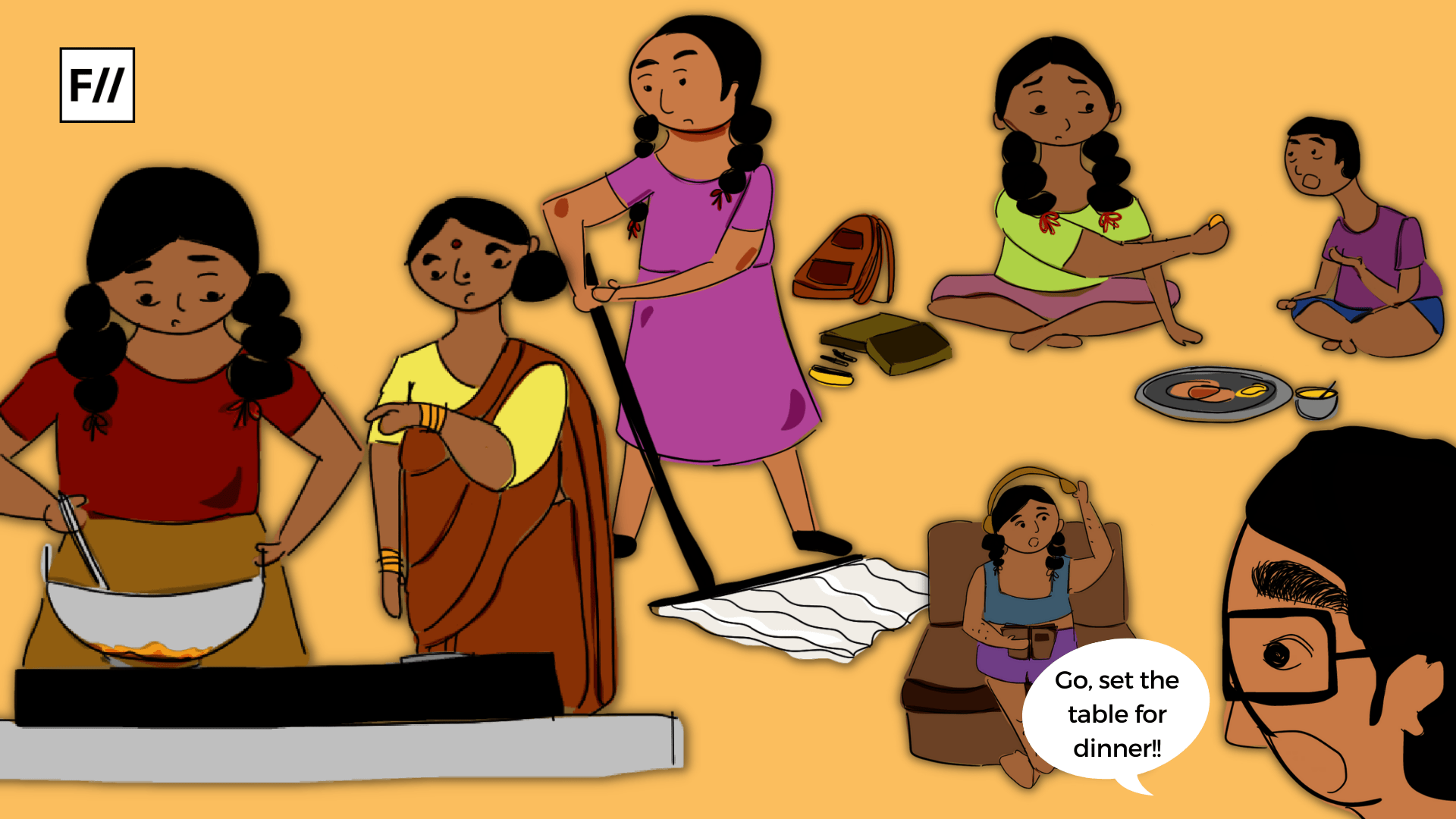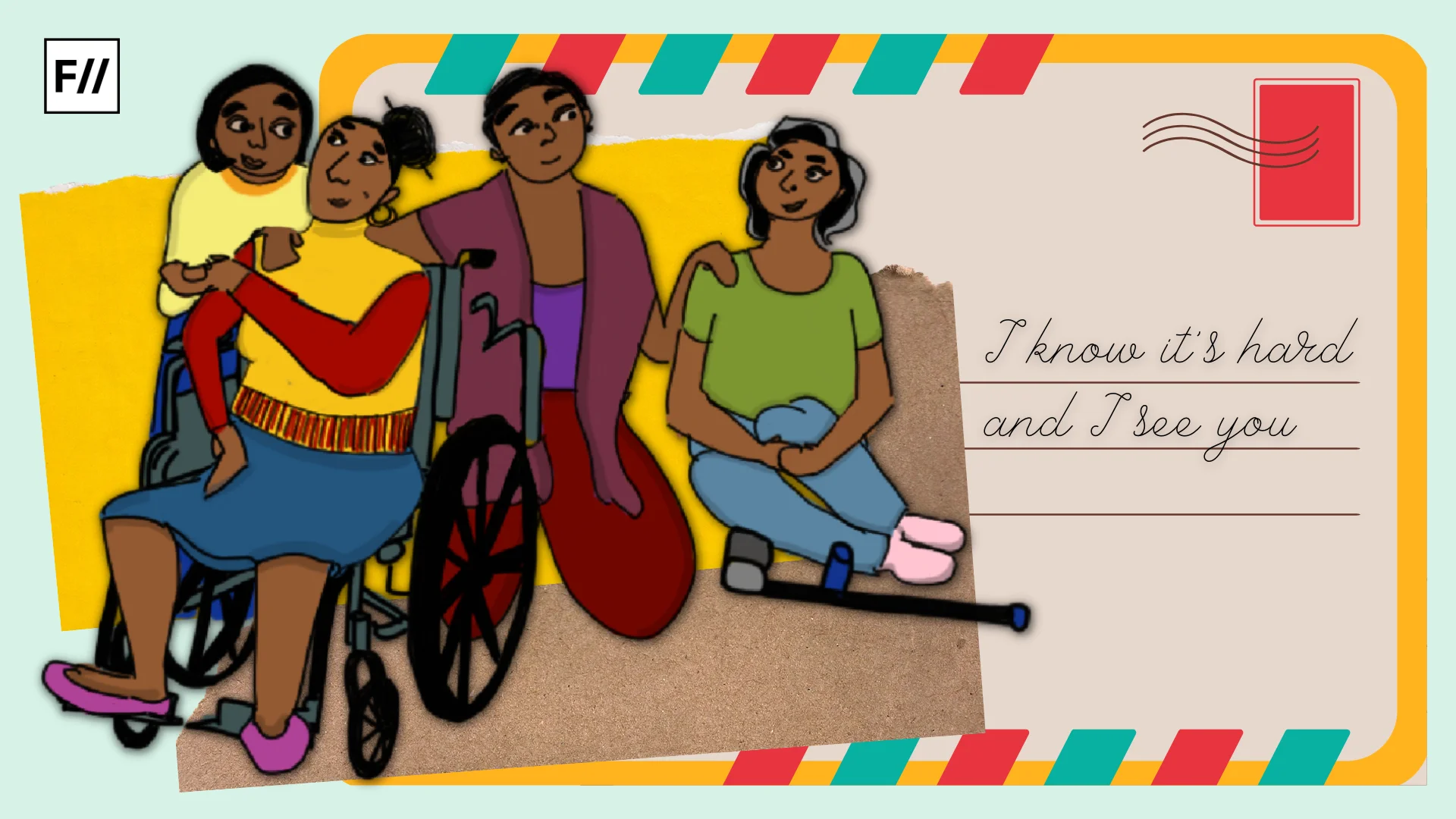Families who seek brides for their sons often stress on wanting a ‘good girl‘. This is something that is no longer surprising, because most matrimonial advertisements carry this phrase. But what does this definition of ‘good’ imply? How is a girl easily identified as a good or bad individual?
This is perhaps where feminist philosopher Simone de Beauvoir’s thesis that ‘a woman is not born but made’, becomes prominent. While being educated and employed are accepted as the traits that add up to the ‘goodness‘ of a woman, raising voice, questioning and reacting to anything that disrupts their individual choices are listed as the qualities of a ‘bad‘ woman. These mandates are not just limited to perceptions but are highly embedded into our collective conscience as well.
A scene in the recent Malayalam film The Great Indian Kitchen brings out the placement of the ‘good’ woman within a patriarchal set up very well. When the wife speaks about sexual discomfort and expresses her need for more prolonged foreplay, the husband slut shames her by asking – “Oh, you know all that?” – to imply that a ‘good‘ woman would not have much insight into matters of sex because she is supposed to be ‘chaste‘ and serve the desires of her husband

The term ‘culture‘ can be contextualised to encompass everything from what we eat, wear, see, to how we think and choose to live. Most of the stereotypes and prejudices associated with gender lie under the legitimised roots of our social conscience. This is also reflected in popular culture which in turn normalises these oppressive structures and gives them more visibility.
It is this legitimised, biased gender lens that assigns blue Kinder Joys with cars and bullet toys to boys and pink ones with dolls to girls. It appears that we are performing our genders on the basis of the dictums produced and supervised by patriarchy and various other intersectionalities.
Also read: Analysing Body, Autonomy & Gendered Spaces In The Great Indian Kitchen
The assignment of gender roles subjugates women and ascribes the pressure of ‘manliness‘ on men. While women are expected to cook, clean, nurture and sacrifice, men are taught to be the main earners of the family, protectors of the wife and children, and immune to emotions and vulnerabilities. When we consider trans and queer individuals in this context, gender roles further marginalise their experiences, thereby invisibilising their struggles by embedding them within heteronormative binaries.
Patriarchy conditions female purpose in the social hierarchy in such a way where women are not expected to be the learners of sexual knowledge. It is men who must dominate and initiate it, not women. When we try to question this by citing how discriminatory and oppressive it is, we largely receive silence and the same old response – ‘it has always been like that‘
Gendered positioning of expected social behaviours create the categorisation of ‘good‘ and ‘bad‘. When gender roles are normalised, they become the default behavioural standard that is supposed to be adhered to by each gender. Women of course, bear most of the brunt because patriarchy expects women to accept that their place in the society is not as relevant as those of men.
American feminist, writer and activist Betty Friedan in her thesis on The Feminine Mystique, addresses the creation of an ideal image of women – domesticated, nurturing and compliant. She calls it “the problem that has no name” and examines the lives of several housewives from around the United States in the 1950s and early 1960s who were unhappy despite living in material comfort and being married with children.
She discusses the detrimental effects of projecting an image of the ‘good‘ woman, without taking into consideration the structures that are employed in the creation of this problematic ideal. It is high time for us to realise that all of us are the victims of Friedan’s unnamed problem that is shaped and framed by our cultural learnings.

A scene in the recent Malayalam film The Great Indian Kitchen brings out the placement of the ‘good’ woman within a patriarchal set up very well. When the wife speaks about sexual discomfort and expresses her need for more prolonged foreplay, the husband slut shames her by asking – “Oh, you know all that?” – to imply that a ‘good‘ woman would not have much insight into matters of sex because she is supposed to be ‘chaste‘ and serve the desires of her husband.
Patriarchy conditions female purpose in the social hierarchy in such a way where women are not expected to be the learners of sexual knowledge. It is men who must dominate and initiate it, not women. When we try to question this by citing how discriminatory and oppressive it is, we largely receive silence and the same old response – ‘it has always been like that.’
Also read: From Veruthe Oru Bharya To The Great Indian Kitchen: Female Identity In The Domestic Space
The digestion of these gendered narratives in real life and reel life makes them more cemented in our cultural premise. The recent uproar against the Dabur Fem advertisement and the FabIndia promotional also shows how we expect women to look, love and behave a certain way. While being thin and fair is identified as a marker of beauty, raising voice and having opinions, or not complying to cultural and moral expectations is considered deviant for a woman.
It is high time we examine our biases and see why the continuous validation and normalisation of problematic gender roles is detrimental to the principles of equality.
Anjana is a first year masters student of Development Studies at the Indian Institute of Technology, Guwahati. You may find her on Instagram
Featured Image: Ritika Banerjee for Feminism In India





Families who seek brides want a good girl just as families who seek grooms want a rich man. Matrimonials ask for a six figure salary. A man is judged by how much he earns, what car he drives, whether his house is rented or his own, etc. Women always marry a man who is richer than her. Women’s social status changes overnight after marriage.